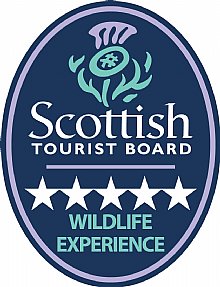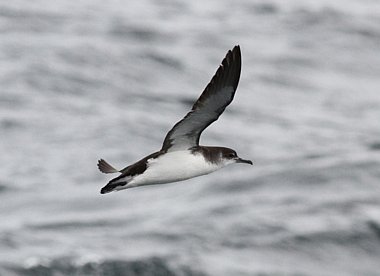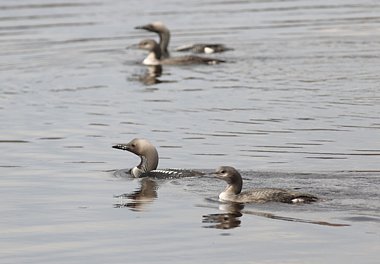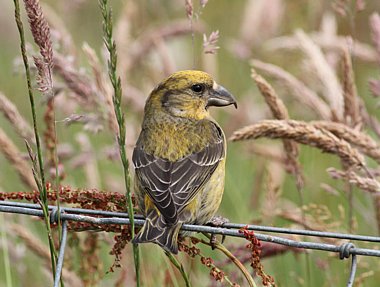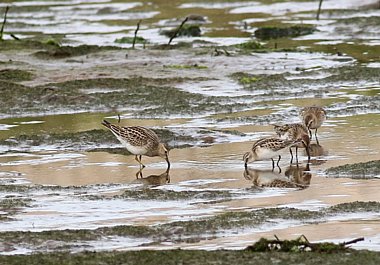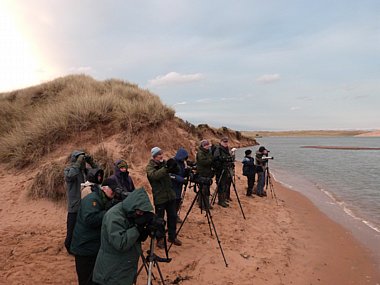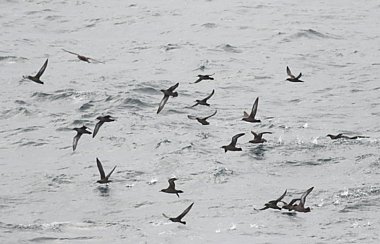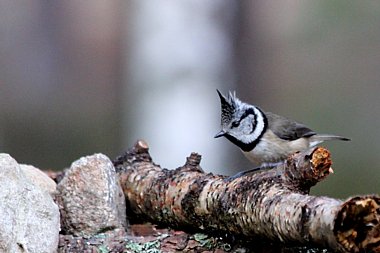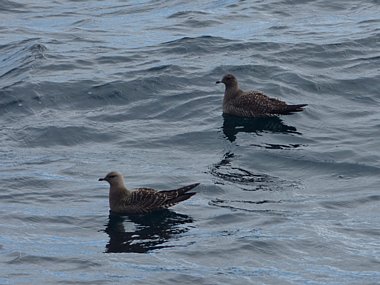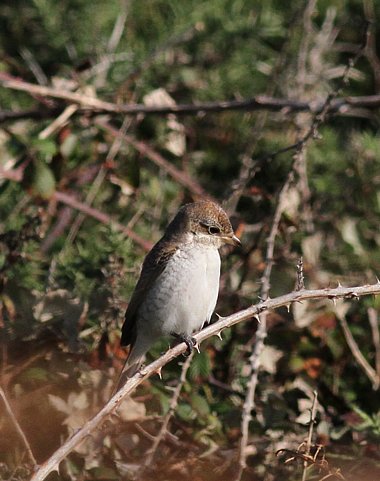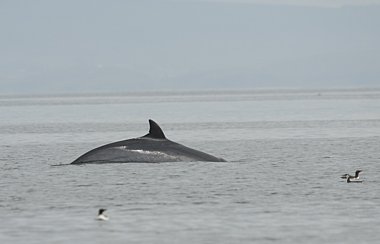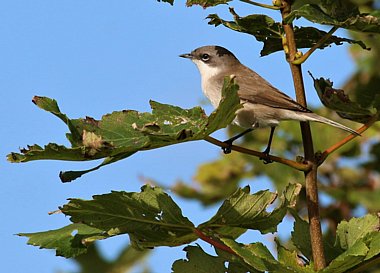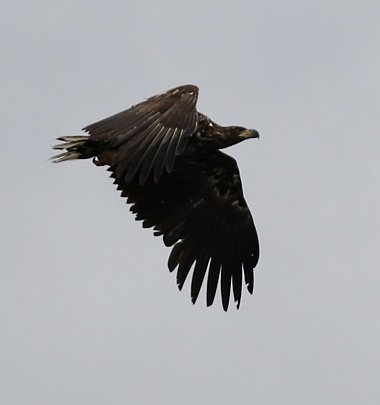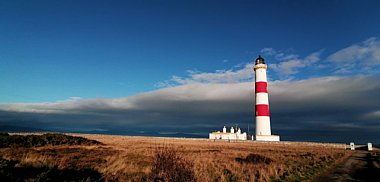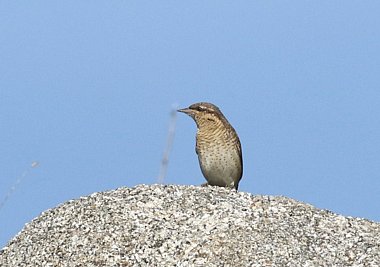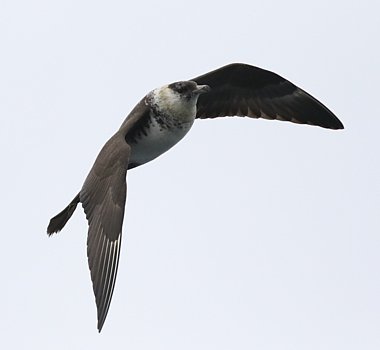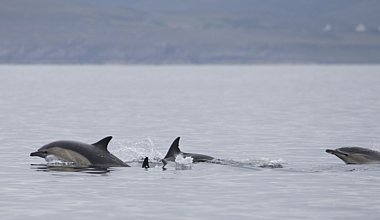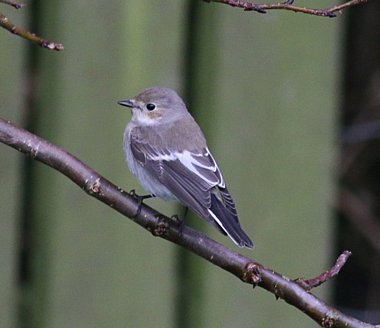Highland Migration by land and sea
With migration at the fore and now with TWO boat trips, we explore birding hotspots on three coastlines.
| Destination | |
|---|---|
| Focus | |
| 2025 Dates | |
| Duration | 8 Days |
| Guides | |
| 2025 Price | £1595 pp No single supplement. Deposit £300 |
| 2026 Dates | |
| Duration | 8 Days |
| 2026 Price | £1695 pp No single supplement. Deposit £300 |
| Max Group Size | 7 per guide |
Autumn is an exciting time of year, and on this tour we explore the Highland coastline to its fullest, offering some of the best migration-based birding available in Scotland. Our Mountview Hotel is ideally placed and on this highly flexible itinerary our daily routine will very much depend on weather conditions and up-to-date bird news. Local knowledge is key, and our guides will choose the right day to visit sites accordingly, dedicating time to both land and sea. Resident populations are at their peak and with incoming migration, bird numbers and species variety are at their highest.
With TWO boat trips planned, exploring offshore waters both east and west we have excellent chances of seabirds. Commoner, locally bred species can be abundant and on our pelagic trips 'chumming' brings the birds in close, the views of shearwaters, skuas and petrels often being excellent. Higher numbers are more likely in the Minch, and from elevated viewing decks on the ferry this stretch of water also offers excellent chances for cetaceans. Risso's and Common Dolphin, Harbour Porpoise and Minke Whale are all likely and in calm conditions and with good feeding opportunities, larger species such as Fin and Humpback Whale are possible. Day visits to the Moray Coast and Black Isle yield a variety of waders, seaduck, divers and grebes, while rich farmland ensures there is plenty to seek inland. The Aberdeenshire coast or Tarbet peninsula both support a variety of habitats, with some species rarely seen on other tours possible, and ‘drift’ passerines after easterly winds. Will we get lucky with a rarity or two?
With migration the priority, this is a unique tour. We do look for our Highland specialities including Crested Tit, Black Grouse and eagles, but do not plan to seek Ptarmigan in the high hills or elusive Capercaillie in the forests. Instead, we devote more time and choose the best days to look for seabirds, the best tides to check for waders and the best winds for passerines. We may single out an exciting rarity, and be prepared for a change of plan for that one special bird! It’s an exciting time for keen birders to be out in the field, and our guides especially enjoy these days so come and join them!
KEY MOMENTS at our Friday round-up - which will be yours?
- Shearwaters, petrels, skuas and perhaps cetaceans on sea-trips off the Aberdeenshire coast and into the Minch.
- Scouring summer plumage waders for a scarce sandpiper or stint.
- Migrant hunting at east Highland hotspots with rarity possibilities.
- A ‘fall’ of migrant passerines – bushes filled with birds!
This is a very flexible tour, so please consider the itinerary below as a guide only to our daily activities. The plan could well change at short notice if an exciting rarity is available!
Day 1: Saturday
Arrival, welcome, dinner and briefing. Don’t forget our courtesy collection service from Aviemore.
Day 2: Sunday – Moray Coast
The bird-filled Moray coast is a great place to start, and here we can expect to see a range of species from waders, seaduck, gulls and terns to farmland birds. At this time of year wader passage is in full swing and among commoner migrants we look for Whimbrel, Black-tailed Godwit, Ruff, Greenshank, Little Stint, Curlew, Wood and Green Sandpiper. Nearctic vagrants can turn up; Pectoral, White-rumped and Baird’s Sandpiper all having been seen on recent Heatherlea tours. Osprey find the area to their liking, especially immature birds, and several may be present as they learn to fish. Likely too are moulting Goosander, Eider, Red-breasted Merganser, Red-throated Diver, Shag and perhaps early returning Common and Velvet Scoter. Sandwich, Common, Arctic and Little Tern may be seen, while rich farmland boasts Tree Sparrow, Linnet, Yellowhammer, Stock Dove, Corn Bunting and Grey Partridge. A great first day to get our birdlists moving in the right direction!
Day 3: Monday – Aberdeenshire Pelagic trip
An exciting day, with a new boat trip planned off the Aberdeenshire coast targeting migrant seabirds. On this special pelagic charter, we travel into deeper water and by ‘chumming’ hope to attract species less regularly seen from land. Commoner seabirds are likely to include Shag, Fulmar, Gannet, Kittiwake, Razorbill, Guillemot, Puffin and Black Guillemot. No one pelagic trip is the same and there are lots of other possibilities, including European Storm Petrel, Manx and Sooty Shearwater. It is a great time of year for skuas with all four possible, and we may enjoy close encounters with Great, Arctic, Pomarine and Long-tailed Skua. And with increasing sea temperatures bringing a number of rarer, ‘southern’ seabirds into UK waters, species such as Balearic, Cory’s and Great Shearwater are sighted annually in the North Sea, while Sabine’s Gull and Grey Phalarope are possible after westerly storms. And while the west coast is known to be better for cetaceans, we may get lucky with Minke Whale, Harbour Porpoise or the semi-resident pod of Bottle-nosed Dolphin. A fabulous exploratory sea trip, and after we return to land we continue birdwatching at lesser-known headlands, valleys and coastal bays for migrant birds.
Please note our boat trip is a dedicated 4-5 hour pelagic, heading several miles offshore followed by long periods of idling. By chumming (deploying fish and oil) we attract the birds in close and the views can be excellent, with good photography opportunities of less regularly seen species. Our local skipper knows these waters well, and while we can be flexible to choose a day with the best conditions, it may still be choppy in open water. Such trips are of course optional and you may remain ashore if you prefer.
Day 4: Tuesday - Black Isle or Tarbat Peninsula
Today we head north of Inverness, choosing to visit either Black Isle or the Tarbat Peninsula. The Black Isle needs no introduction especially at this time of year, when waders are on the move en-masse and seaduck including Scaup, Red-breasted Merganser, Eider plus Slavonian Grebe begin returning to their winter haunts. Lesser known is the Tarbat Peninsula, a rarely visited narrow headland protruding out into the North Sea. With the Dornoch Firth on one side and the wider Moray Firth on the other, it is a sea-watching hotspot and also positioned perfectly to ‘catch’ migrants after easterly winds. With a reputation for attracting rarities and unusual birds, in the right conditions a walk around the scrubby cover and plantations may produce warblers, flycatchers, thrushes, Redstart, Whinchat, Wheatear or perhaps something scarcer such as a Red-breasted Flycatcher or Red-backed Shrike. Nearby estuarine and coastal sites also offer good birding for migrant waders and wildfowl, including scoter flocks. Whatever we do or see, we will enjoy a great day.
Day 5: Wednesday - Local forests and moors
In a break from the migration hotspots on the coast, we change habitats to inland forests and moorland for resident Highland specialities. Our Mountview hotel is well placed and a local drive before breakfast should produce Black Grouse as they return to their lekking grounds. Red Grouse are usually abundant too and later we look for Crested Tit in the forests. Scottish Crossbill are found in our forests too and with both Common and Parrot Crossbill also present, separation of these three species can pose a real ID challenge! A few Spotted Flycatcher, Redstart or Tree Pipit may be lingering, and we visit local lochs and rivers to look for Dipper, Grey Wagtail, Goldeneye and Goosander. It is also a good time of year for dispersing raptors, and Golden and White-tailed Eagle, Red Kite, Osprey, Goshawk, Hen Harrier, Peregrine and Merlin are all possible, the latter often hunting Meadow Pipit flocks which pass through at this time.
Day 6: Thursday – Exploring the Minch
Today we travel north-west, perhaps seeing Raven and Hooded Crow on the way, to join the Ullapool to Stornoway ferry for our second boat trip. The ferry is a large ship and we take both outbound and return sailings to/from the Isle of Lewis doubling our chances of migrant seabirds. Leaving Loch Broom, Black Guillemot, Red-throated Diver and even eagles over the hills are possible, and entering more open water, locally bred seabirds can be abundant. The Minch is a great stretch of water to see Arctic and Great Skua, European Storm Petrel and Manx and Sooty Shearwater. It also a great time of year for rarer possibilities after storms with Leach’s Petrel a real possibility, alongside Pomarine and Long-tailed Skua or perhaps Sabine’s Gull. This stretch of water also has a superb reputation for cetaceans and in calm seas we have good chances. Risso’s and Short-beaked Common Dolphin, Harbour Porpoise and Minke Whale are the most likely, while in recent years larger species such as Humpback and Fin Whale and Orca have been sighted more frequently.
Day 7: Thursday - Aberdeenshire coast or round up day
Our final day and one with many options! Migrants will be at the forefront of our thinking and travelling for known rarities may dictate which area we visit. Travelling to Scotland’s east coast is one such option, giving us another opportunity to add to our ever-growing bird-lists. With habitats ranging from the coastal scrub, plantations, hedgerows to estuarine, freshwater lochs, sand dunes and the sea itself all at our disposal. Out in the fields the first few Pink-footed Geese may be returning, and Marsh and Hen Harrier can move goose flocks around. Wildfowl, waders, terns, passing seabirds are likely as are migrant passerines in the bushes, especially if the wind is from the east! Common Crane are now breeding in Scotland and are increasingly recorded in autumn, as are Spoonbill, Little and Great Egret. Aberdeenshire has a great reputation for rarities, and recent examples from this time of year have included Surf and Black Scoter, King Eider, Red-necked Grebe, Pectoral Sandpiper, Lesser and Greater Yellowlegs, Greater Sand Plover, Bee-eater, Wryneck, Icterine, Greenish and Barred Warbler. Another day where anything is possible!
Day 8: Saturday -Departure
Breakfast and departure. Don’t forget our courtesy return service to Aviemore.
This holiday can be combined with:
MAINLAND SCOTLAND
Autumn in the Highlands with Easy Walking, Autumn Migration in the Highlands, Raptors and Grouse
Please note: all itineraries are given as a guide only. Actual holiday content may vary according to the judgement of your guide, and elements beyond our control (eg weather).
What's included in your holiday price
- Seven nights comfortable accommodation at The Mountview Hotel, VisitScotland rated 3 Star. All rooms are en-suite, with TV and hospitality tray. There is no single supplement, and guests are never expected to share. Single guests may be upgraded to double room accommodation at no extra charge.
- Full Scottish breakfast, a substantial packed lunch, and a delicious dinner.
- Six full days wildlife watching.
- Guidance from a professional Group Leader.
- All transport by comfortable minibus.
- All boat trip and ferry fees.
- A checklist specifically prepared for your holiday to record your sightings and notes.
- Courtesy bus service to and from transport in Aviemore.
What's not included in your holiday price
- Insurance, drinks and other items of a personal nature.
More holiday information
Accommodation at Mountview Hotel can be seen here. All accommodation is en-suite.
Food There is a choice of evening meal, and vegetarian, vegan and other diets are welcome. Breakfast may be chosen from a full Scottish menu. You don't need flasks for hot drinks.
Walking will be mainly light 1-3 miles daily, though sometimes extra effort and a tougher walk may be needed to get to special birds. All such walks are of course optional.
Travel is by comfortable nine-seater minibus.
Weather Expect a wide variation in weather conditions. Blazing sunshine, wind and rain are equally likely, and you will probably experience a bit of everything. Bring waterproofs, walking boots or shoes and warm clothing.
Biting insects are unlikely to be encountered, but bring a good repellent just in case!
Group size maximum 7 clients per guide.
Optics Telescopes will be useful, and you should bring binoculars. We have a limited number of top quality Swarovski binoculars, which you may borrow at no charge (subject to availability). A camera would be useful too!
Getting here is easy!
BY CAR Travel north to Perth. Take A9 signposted Inverness to the exit north of Aviemore for the A95. Follow signs northeast through Boat of Garten to Nethy Bridge (ten miles). In Nethy Bridge, drive through the village, over the River Nethy, and you will see our sign 200 metres ahead on the right.
BY RAIL Don't forget our courtesy collection service from Aviemore on Saturdays at 16:30 and 19:30, but please let us know at least 48 hours in advance! The best train to Aviemore is the ‘Highland Chieftain’ on the East Coast Line. This leaves London Kings Cross at 11:00, arriving Aviemore at 19:22. We recommend you connect with this service if possible. Our pickup also works well with the 16:26 arrival from Edinburgh. In general, rail travel via Edinburgh is easier than via Glasgow, where a trip across the city between stations is needed, often followed by a change at Perth. Return trains leave Aviemore at 08:32 (fast train to London – recommended), 09:26. 10:31 and 11:30. However we can only make 2 journeys to Aviemore on Saturday morning, so you may be taken to Aviemore a little earlier. Rail enquiries: 0845 7484950, www.nationalrail.co.uk
BY AIR Flights to Inverness are becoming available all the time, for latest info call our office. Currently direct flights to Inverness are available from: Belfast, Dublin, Birmingham, Manchester (all Loganair), London Gatwick, London Luton, Bristol (all easyJet) and London Heathrow (British Airways). Guests arriving in Inverness airport can then take a taxi to Nethy Bridge, or take the Airport Flyer bus to Inverness, from there they can take the train to Aviemore where we can collect you. Our courtesy collection service is on Saturdays at 16:30 and 19:30, but please let us know at least 48 hours in advance if you wish to be collected! We will be able to meet the 15:44 and 18:53 trains departing from Inverness that arrive at 16:25 and 19:26 respectively.
Other birdwatching holidays in Highlands
- Raptors and Grouse
- Autumn in the Highlands with 'Easy Walking'
- Autumn Migration in the Highlands
- Birders' Blasts in Autumn!
- Birders' Blasts in Winter!
- Birding the Highlands in May
- Birding the North Coast 500
- Butterflies, Dragons and Birds
- Cairngorms and East Sutherland
- High Season Across the Highlands
- Highland Autumn Birding
- Highland Autumn Explorer
- Highland Mammals and More!
- Highland Wildlife in early summer
- Highland Wildlife in High Summer
- Highland Winter Birding
- Highlands & Ardnamurchan
- Highlands & East Coast Birding
- Highlands & Orkney
- Highlands and Corncrake
- Highlands and Skye in Autumn
- Highlands and Skye in spring
- Highlands and the Outer Hebrides
- Highlands and the West Coast
- Highlands and Wester Ross
- Hogmanay Birding Extravaganza
- New Year Birdlist Booster
- NEW! A Scottish Celebration - Wildlife and Whisky
- NEW! Highlands and East Neuk of Fife
- NEW! Highlands and Grampian Explorer
- NEW! Highlands and the Far North in Autumn
- NEW! Highlands and the Small Isles
- NEW! Highlights of the Highlands - Wildlife and Culture
- NEW! Strathspey Walking and Wildlife
- NEW! Walking and Wildlife
- North West Scotland Explorer
- North-east Scotland Explorer
- Scottish Wildlife in Late Autumn
- Scottish Winter Specialities
- Short Breaks - Scottish Birding in Autumn
- Spring into Scotland including Mull
- Spring Migration in the Highlands
- The 'Outer Limits' Adventure
Why choose Heatherlea for your Scottish birding holiday?
Heatherlea is THE place for top quality birding holidays in Scotland, chosen by more and more birders each year. Stay in our own three star Small Hotel, and enjoy first-rate birding with Scotland’s best guiding team. Relax and enjoy yourself, as we do all the planning! Above all, we make it our business to show key wildlife to you. Our fully inclusive guided holidays concentrate on the real experience, and we take time to ensure that each of our guests enjoys everything we do.
- We have been organising birding and wildlife holidays for 30 seasons, and have a highly experienced and capable office team. We also offer a telephone and email service outside normal office hours.
- Our ‘Mainland Scotland’ holidays based at Mountview Hotel have a maximum ratio of 7 clients per guide, putting the emphasis on personal service, and helping you get the best possible experience.
- We are a small company, run BY birders FOR birders. Come and see!
- Heatherlea are Mainland Scotland’s FIRST ‘5-Star Wildlife Experience!’ This is the highest available grading, classified as ‘exceptional’ by visitScotland.
- There is no single supplement. Single guests are never expected or invited to share.
- Our holidays often include things which others might invite you to pay yourself, for instance loan of Swarovski binoculars, packed lunch and tips to hotels.
- We offer a courtesy transfer between our Hotel and Aviemore rail/bus links on Saturdays.
- Heatherlea hold full Tour Operator Insurance for your added protection.
- Heatherlea is a limited company, registered in Scotland. We are also registered to pay VAT, which is included in your holiday price as quoted on this page.
- Once your holiday is confirmed in writing by us, we promise not to surcharge the price for any reason.
Enjoy an excellent birding and wildlife holiday with Heatherlea.
Mainland Scotland’s FIRST ‘5-Star Wildlife Experience!’
'Exceptional'
Visit Scotland

